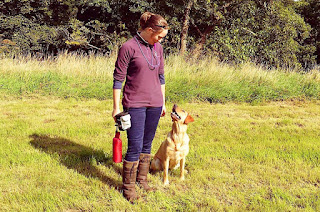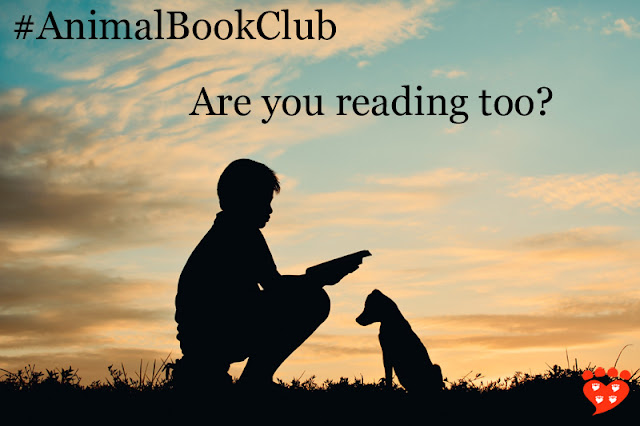The canine and feline scientists, pet professionals, bloggers and organizations to follow on social media in 2018.
 |
| Photo: Ramon Espelt Photography (Shutterstock) |
Are you looking for some new accounts to follow in 2018? I’ve updated my list of some of the best people and organizations to follow on Twitter and Facebook if you’re interested in companion animals, science, and the human-animal bond.
Not only do they produce great content of their own, they also have a varied feed that includes news, research and interesting snippets from around the web.
I’ve given links to Twitter and Facebook accounts so you can follow however you choose (some are more active on one than the other). The first link is always to Twitter so this is like a giant #FF. The second link is to Facebook if they are on there too.
The list is in no particular order, so read through and see who you would like to follow.
And please consider following me too (
Twitter,
Facebook) if you don’t already!
Of course, there are many talented people in the world, so please add your own suggestions for people or organizations to follow in the comments below.
Dr. John Bradshaw – anthrozoologist and best-selling author of The Animals Among Us, Dog Sense (In Defence of Dogs), Cat Sense, and co-author of The Trainable Cat
Dr. Sarah Ellis (
Facebook) – co-author of the The Trainable Cat and feline behaviour specialist at
International Cat CareDr. Hal Herzog – Professor Emeritus of Psychology at Western Carolina University and author of Some We Love, Some We Hate, Some We Eat: Why It's So Hard to Think Straight About Animals .
Dr. Alexandra Horowitz (
Facebook) – canine cognition scientist and best-selling author of Inside of a Dog and Being a Dog.
Family Dog Project (
Facebook) – the canine behaviour research group shares frequent updates on the latest scientific research from their team and others around the globe
Julie Hecht (
Dog Spies) – don't miss the fantastic posts on canine science at Julie's Scientific American blog Dog Spies
Mia Cobb (
Do You Believe in dog?) – now a canine science community with guest posts from young scientists on the blog and a feed full of news about canine science, including opportunities to participate
International Cat Care (
Facebook) – a great resource for cat lovers, with information and advice for owners and professionals, as well as cute cat pictures too
Dr. Ilana Reisner (
Facebook) – this veterinary behaviourist regularly deconstructs dog bite incidents to teach you how to prevent dog bites, and shares interesting and evidence-based items on animal behaviour and training
Dr. Pete Wedderburn (
Facebook) – veterinary advice and news, regular Telegraph columnist, author of Pet Subjects, and you’ll find a large library of articles on his website too.
Dr. Mikel Delgado (
Feline Minds) – Certified Cat Behaviour Consultant and PhD candidate shares information about cats and squirrels, with especially useful information on food puzzles for cats
Ingrid Johnson (
Fundamentally Feline) – education about cats and gorgeous photos from this Certified Cat Behaviour Consultant
BC SPCA (
Facebook) – in amongst the photos of adoptable animals there is plenty of advice on how to care for pets, including #TipTuesday videos
Maddie’s Fund (
Facebook) – lots of tips to help shelter dogs and cats, along with social media and website advice for the people running the shelters #ThankstoMaddie
The Academy for Dog Trainers (
Facebook) – for links to top-notch dog training advice from Jean Donaldson’s Academy for Dog Trainers (“the Harvard of dog training”)
Kristi Benson (
Facebook) – dog trainer, sled dog rescuer, and Academy tutor, with a funny and entertaining dog training blog
Pet Professional Guild (
Facebook) – advice on dog training and news from the organization for force free pet professionals
IAABC – information on behaviour problems in pets and links to journal articles and mentorships from the International Association of Animal Behaviour Consultants
Dr. Jessica Hekman DVM (
Facebook) – the author of The Dog Zombie blog is a vet with a PhD in genomics, a postdoctoral associate at the Karlsson Lab, and a great explainer of canine genetics
Darwin's Dogs – using citizen science to study dog evolution and find new insights into dog and human psychiatric diseases
Dr. Brian Hare (
Facebook) – information on animal minds and evolution, especially dogs and bonobos, from the associate professor of Evolutionary Anthropology at Duke, co-author of The Genius of Dogs and founder of
DognitionDr. Gregory Berns – scientist who uses fMRI to study dogs’ brains, author of How Dogs Love Us and What It’s Like to Be a Dog
Pam Johnson-Bennett (
Facebook) – cat news and tips from the best-selling author of Think Like a Cat and host of Animal Planet’s Psycho Kitty
Susan Little DVM – this veterinarian specializes in feline medicine and has a twitter feed packed with intriguing facts about cats
Dr. Melanie Rock – information about non-human animals and health, including dog parks and dog bite prevention, from this Associate Professor at the University of Calgary
Martha Smith-Blackmore DVM – this compassionate expert in veterinary forensics is a Faculty Fellow at Tufts Cummings School of Veterinary Medicine and shares information on animal cruelty and animal welfare
Dr. Malcolm Campbell – biologist and Vice President (Research) at the University of Guelph, follow Malcolm for science tweets and #SixIncredibleThingsBeforeBreakfast that will blow your mind about animals and the universe
Katzenworld Blog (
Facebook) – for chatty posts, product reviews and cute cat photos, with some articles on cat health and behaviour too
The Centre for Shelter Dogs (
Facebook) – part of the
Cummings Veterinary School at Tufts University and brings you lots of resources to help shelter dogs
Anthrozoology Research Group (
Facebook) – shares links to interesting anthrozoological research by themselves and from around the globe
Dr. Sam Gaines – head of the Companion Animal dept at the RSPCA, with lots of tips to improve animal welfare and #EndBSL
Dr. Rachel Casey – veterinary behaviourist and animal welfare scientist at Dogs Trust, so look out for lots of great info on canine behaviour
UCD Vet Behaviour Services – recent research and behaviour information from the Behaviour Service at UCDavis
Dr. Chris Blazina – psychologist with a special interest in understanding men and their canine best friends, shares interesting links about human animal interaction
Dr. Alan McElligott – tweets about his research and about animal behaviour, welfare and cognition generally; look out especially for the entertaining goat stories
Dr. Marc Bekoff – animal emotions, moral behaviour, and conservation topics from the author of The Emotional Lives of Animals and Canine Confidential: Why Dogs Do What They Do, plus a very active Psychology Today blog
ASA Animals Society (
Facebook) – the American Sociological Association looks at the complex relationships between humans and animals
Dr. Marc Abraham (
Facebook) – animal welfare campaigner and veterinarian of the year, founder of
Pupaid (
Facebook), a UK group campaigning against puppy farms, with regular games of #GuessTheBreed
Dr. Sophia Yin (
Facebook) – the account of the company set up by the late Dr. Sophia Yin, CattleDog Publishing, shares her writings and educational links on animal behaviour.
Dr Marty Becker DVM (
Facebook) veterinary information and stories about the human-animal bond from America’s veterinarian, found of
Fear Free (
Facebook) to help dogs and cats have a better experience at the veterinarian
Montreal SPCA (
Facebook) – SPCA and campaigners against Breed Specific Legislation and for better animal welfare, with news in English and French
Dr. Emily Blackwell – clinical animal behaviourist, scientist at the University of Bristol, and TV expert, shares animal welfare and animal behaviour science and tips.
Dr. Jenny Stavisky – shelter vet and epidemiologist as well as uplifting tweets about how
Vets in the Community help the most vulnerable pets
Dr. Sebastiaan Bol – researcher and found of Cowboy Cat Ranch, look out for all the cute kitty photos
Dr. Lauren Finka – postdoctoral researcher studying pain in cats
Dr. Naomi Harvey – zoologist, ethologist and research fellow at the Itchy Dog Project
Dr. Kat Littlewood (
Facebook) – small animal veterinarian and PhD student especially interested in cats and animal welfare, with an interesting blog too
Dr. Sandra McCune – scientific leader in Human Animal Interaction at WALTHAM
Kim Monteith - manager of animal welfare at the BC SPCA and volunteer at Charlie’s Food Bank helping the pets of the homeless in Vancouver
Dr Kate Mornement (
Facebook) – PhD-qualified behaviourist at Pets Behaving Badly – Solutions with Dr Kate with an interesting blog on dogs, cats and parrots
Dr. Carri Westgarth – research fellow in human animal interaction and dog trainer, specializing in research on dog walking and dog bites
Dr. Zoe Belshaw – evidence-based approaches to veterinary science from this veterinary specialist at the University of Nottingham
Dr. Emma Milne (
Facebook) – the vet behind vets against brachycephalism, author and animal welfare enthusiast
Dr. Patrizia Piotti – postdoctoral research on dog behaviour and cognition
Taryn M Graham (
Facebook) – PhD candidate interested in how dogs can help promote health in cities, and founder of PAWSitive Leadership which takes certified dogs into classrooms to teach children.
Dr. Christy Hoffman (
Facebook) – regular updates on anthrozoology from the Canisius Canine research team
Dr. Caroline Spence – academic interested in animal welfare and sentience and we understand animal minds
Dr. Debra Horwitz – veterinary behaviourist and author of Blackwell’s Five-Minute Veterinary Consult Clinical Companion: Canine and Feline Behaviour
Cats Protection (
Facebook) – cat videos and advice on how to care for your cat as well as lots of cute pics from this large UK charity
HartpuryABW – a busy feed full of news, info and jobs via Dr. Tamara Montrose and the Hartpury Animal Behaviour and Welfare group
Dr. Anne Fawcett (
Facebook) – small animal veterinarian with a special interest in ethics and a blog that looks at owners, veterinarians and the human-animal bond
Dr. Vanessa Rohlf (
Facebook) – compassion fatigue consultant shares information on coping with animal bereavement and resiliency for people who work with animals
Dr. Nik Taylor – research and news on the sociology of human-animal interaction
Maureen Backman (
Mutt About Town) – a philosophical approach to reward-based dog training, plus lots of useful info on muzzles via the Muzzle Up project
Dr. Christian Nawroth – postdoctoral researcher in animal cognition including goats and pigs
Kathy Sdao - certified applied animal behaviourist and dog trainer and author of Plenty in Life is Free
Your Pit Bull and You (
Facebook) – Run by Lori Nanan and Lisa Skavienski, YPBandY is a charity that advocates for pit bulls and spreads the word on positive reinforcement dog training for all dogs.
Malena de Martini (
Facebook) – training and resources on separation anxiety from the author of Treating Separation Anxiety in Dogs.
Tracy Krulik (
Facebook) – dog trainer and founder of
iSpeakDog which aims to help you understand canine body language
Laura Monaco Torelli – dog trainer and Karen Pryor Academy faculty member, with a feed full of interesting dog training and animal behaviour info
James Oxley – independent researcher on dog bites and rabbits who shares HAI information and conferences
Clare Ellis - PhD candidate interested in animal welfare and the reasons for relinquishment of rabbits
Janetta Harvey (
Facebook) – tireless campaigner against puppy farms and sharer of information on dogs in general and Schnauzers in particular.
Joanna Berger – animal behaviourist and trainer who shares lots of information on behaviour and welfare for dogs, cats and birds
Jemima Harrison – campaigner for better health and welfare for purebred dogs and the director of Pedigree Dogs Exposed
Now it's your turn. Who would you add to the list? Add a comment below to share your favourite people to follow. And don't forget to
subscribe to Companion Animal Psychology.
Companion Animal Psychology is a participant in the Amazon Services LLC Associates Program, an affiliate advertising program designed to provide a means for sites to earn advertising fees by advertising and linking to Amazon.com and affiliated sites. Companion Animal Psychology is also a participant in the Etsy Affiliate Program, an affiliate advertising program designed to provide a means for sites to earn advertising fees by advertising and linking to Etsy.com.
































